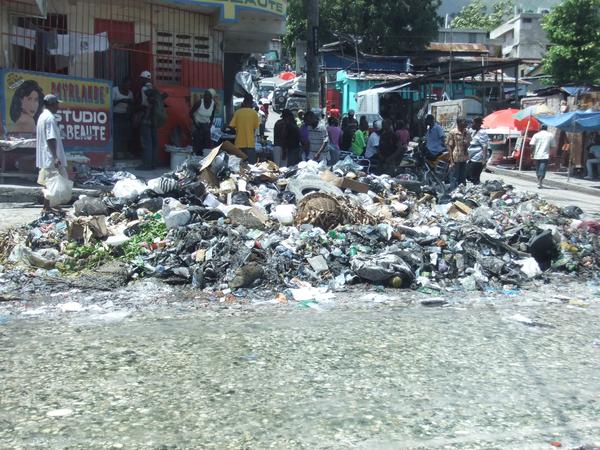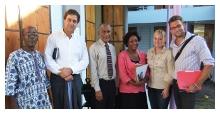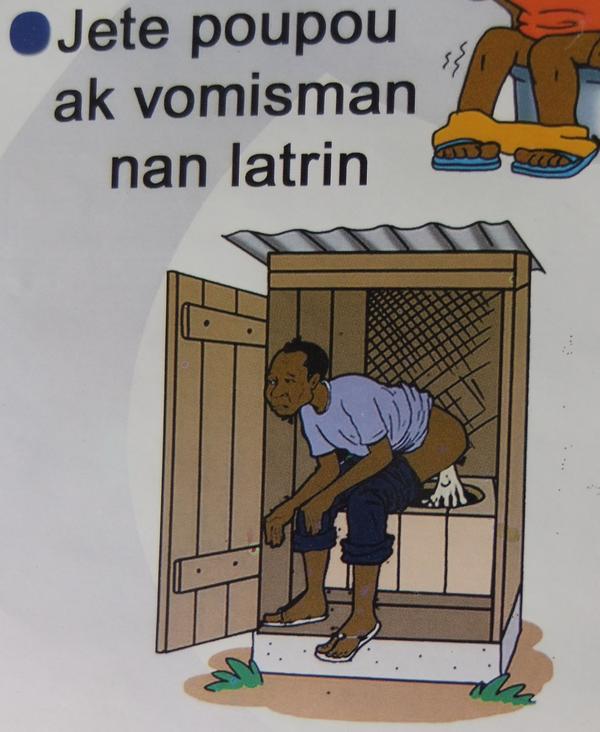EPFL scientists in Haiti to combat cholera transmission

© 2011 EPFL
Two EPFL laboratories have rallied round Terre des Hommes Lausanne. They have created a working group with the aim of developing tools capable of predicting how the bacteria will spread, and organizing healthcare initiatives efficiently.
In January 2010, the earthquake – over 7.0 on the Richter scale – destroyed Haiti, devastating its capital, Port au Prince,causing the deaths of 230,000 people and injuring 300,000. A state of emergency was declared, and over ten thousand NGOs, as well as United Nations personnel, were dispatched to the country. Humanitarian organizations and peace keeping forces provided first aid, distributing drinking water, giving medical care, and clearing the rubble. This phase was followed, nine months later, by an outbreak of cholera. Polluted water, fruit and vegetables which had been watered, or dirty hands caused the disease to be transmitted. Without sewage treatment facilities, everything flowed into the rivers. And in Haiti, rivers are strategic “corridors”: the people wash, play and drink in these places. One-and-a-half years after the catastrophe, the population is still living among the rubble and the garbage.
A strain unknown in South America
 d for this new twist of fate. Studies have revealed that
d for this new twist of fate. Studies have revealed that“If the disease is not treated, it may be misdiagnozed as severe diarrhoea,” explains Melanie Blokesch, Professor at the EPFL Laboratory of Molecular Microbiology and expert in the evolution of the cholera bacteria. “In more severe cases, you can lose up to 20 liters of fluid per day, and children often die within a few hours,” she adds. Absorbing a salt solution enables the prevention of this fatal dehydration. It’s therefore essential to predict how the bacteria spreads in the short term, in order to warn the health authorities and organizations, and protect the population.
When the environment meets the life sciences
 In the Laboratory of Ecohydrology at EPFL, Andrea Rinaldo is undertaking research into the role of waterway networks – real ecological corridors – in the propagation of water-borne diseases. Soon after the outbreak of cholera at the end of 2010, he published a spatial model that enables the prediction of the distribution of pathogenic bacteria, taking into account the time, the place and the movement of populations in Haiti. “We had to improve the model and understand why it didn’t always correspond to the reality, while determining the reasons for unexplained peaks in the epidemic. That’s why we decided to travel to the site of the epidemic and find out what was happening on the ground.” The research group is made up of: Melanie Blokesch, microbiologist; Andrea Rinaldo, hydrologist; and Silvan Vesenbeckh, epidemiologist at the Harvard Medical School.
In the Laboratory of Ecohydrology at EPFL, Andrea Rinaldo is undertaking research into the role of waterway networks – real ecological corridors – in the propagation of water-borne diseases. Soon after the outbreak of cholera at the end of 2010, he published a spatial model that enables the prediction of the distribution of pathogenic bacteria, taking into account the time, the place and the movement of populations in Haiti. “We had to improve the model and understand why it didn’t always correspond to the reality, while determining the reasons for unexplained peaks in the epidemic. That’s why we decided to travel to the site of the epidemic and find out what was happening on the ground.” The research group is made up of: Melanie Blokesch, microbiologist; Andrea Rinaldo, hydrologist; and Silvan Vesenbeckh, epidemiologist at the Harvard Medical School.A different perspective “on the ground”
On their arrival, the scientists had to confront surprise after surprise. They discovered that antibiotics were being distributed widely, sometimes as prophylactics. With no clear directives, some NGOs were just winging it, occasionally in contradiction to the recommendations of the World Health Organization, which distorted the spatial representation of the probleme

They noticed that most people have no access to toilets, and relieve themselves wherever they can. During the rainy season, water carries fecal bacteria into rivers and pollutes them, thus increasing the numbers of people exposed to contaminated water. The rain has other unexpected consequences: “The water washes away the paper-based warning posters, and the people then assume that the epidemic has been dealt with, and get out of the habit of taking precautions,” regrets Melanie Blokesch. This helps to explain the return of the epidemic at this time of the year.
 EPFL’s mission was to meet with the various humanitarian organizations such as Médecins Sans Frontières, Terre des Hommes, and also the WHO, in order to take into account all the facts of the situation on the ground. That is now complete. Soon, a new tool will be available to these organizations, to enable them to rapidly put in place the logistical elements of care, in line with Andrea Rinaldo’s conviction that the epidemiology of the future will be based on modelization.
EPFL’s mission was to meet with the various humanitarian organizations such as Médecins Sans Frontières, Terre des Hommes, and also the WHO, in order to take into account all the facts of the situation on the ground. That is now complete. Soon, a new tool will be available to these organizations, to enable them to rapidly put in place the logistical elements of care, in line with Andrea Rinaldo’s conviction that the epidemiology of the future will be based on modelization.
